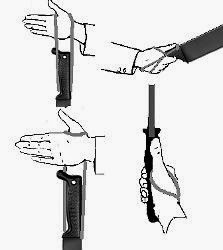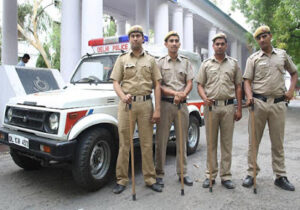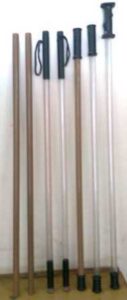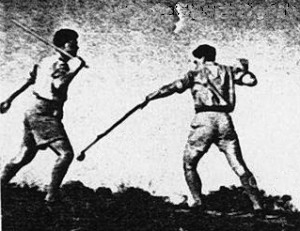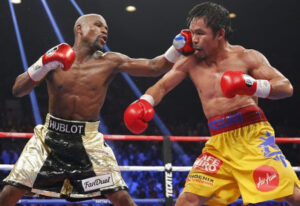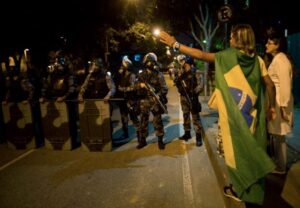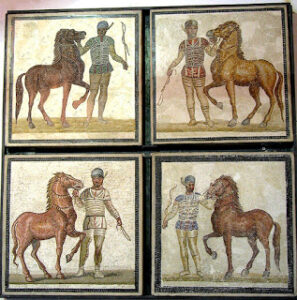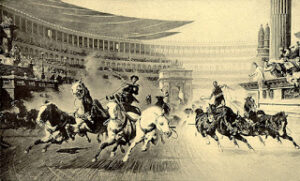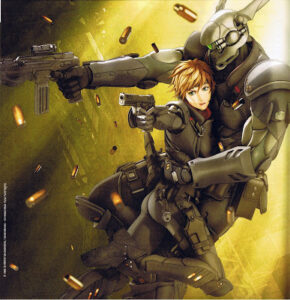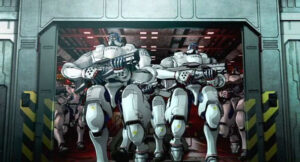Let me give you a hypothetical situation: You are sitting on a bus. A few seats ahead of you a man pulls out his phone. For ease of reference we will call him “the burke”. The burke begins to talk into his phone, loudly, in some language you cannot understand. His conversation goes on for five minutes, then ten and then fifteen and shows no signs of ending.
Would you find this irritating? I know I would, but why?
Permit me to set some background to today’s blog topic. A few days ago my computer at work picked up something nasty by some unknown route. Our computer guy decided that it was simplest to just rebuild the operating system. This will save the few files I had on the machine but will erase the useful programs I had installed. Once again, I am going to remind you all to backup both your files and your program installers I have been without my work computer for this time so I began to investigate my colleague’s book shelf. I picked a copy of what I thought was “King Solomon’s Mines” and saw it was actually “King Solomon’s Ring”. Not a sequel, as it turned out but a highly entertaining and informative book on animal behaviour by Konrad Lorenz. Finishing the book within a day I noticed another book by him, “On Aggression”. A lot of interesting things in this book, and this gave me some insight on why the “burke on the bus” can evoke such strong emotions.

What I learnt was that a culture or subculture has a collection of common habits/ rituals/ customs/ mannerisms. These are so omnipresent in our own culture that we will not be aware of many of them until they become notable by their absence in others. On the buses that I was used to when growing up people tended to be silent or talk at a discrete level. In some countries I have visited the inside of a bus sounds like a fishwife riot. It can be argued that mobile phones have created a change in social norms. That may be so, but it is not really relevant since social norms are not necessarily logical or functional but they are powerful. They are habits that will be strongly ingrained. Some of these conventions are very subtle, such as head position and other mannerisms when paying attention to someone. These can differ between different cities or social groups and encountering different mannerisms can cause wires to get crossed. I once watched a film from Africa. As one character explained something the person he was talking to made an “uh-ha” noise every few seconds. If someone I was addressing did this I would be inclined to perceive them as being rather moronic, irritating or possibly mocking me. To the Africans in the movie this was good manners and they would probably perceive my way of listening and paying attention as boredom and rudeness. Customs that are common in one subculture are repugnant in others. Walk the streets of Hong Kong for a day in the right season and you will hear someone hawking and spitting about every five seconds!
For many people on this bus the burke is violating at least one social norm as they perceive it. It may be in the sub-culture he is from people do talk loudly in buses so he is oblivious that this is not common where he is now. That he is not speaking English and that he assumes his conversation will not be intelligible to his neighbours may have an influence here. Whether he is operating in ignorance or arrogance is irrelevant. To some observers at least he is a social transgressor. A common selection of social norms is said to be a way of social bonding. What is apparent is that violation of these norms causes feelings of tension, discomfort, irritation, anxiety and even aggression.
There is another reason why the burke on the bus stirs such negative emotions. By talking loudly in public he is effectively announcing that anyone in earshot is irrelevant to him. Now, we do not expect a complete stranger on a bus to have any particular affection or concern for us but openly rubbing our noses in this fact is another matter. Unintentionally or not, the burke is effectively insulting everyone else present and our subconscious responds accordingly.
Sometime ago I visited a webpage where the author said something on the lines of “…I know this is about a British game but I am American so I will be spelling it ‘armor’!” It is hard for me to recall that without imagining him finishing with a smug, self-satisfied grin. This statement irritated me and my recent readings have explained why it was actually offensive. That an American should use American spelling is not an issue. What was offensive was his statement was attacking and demeaning English conventions. Before some of my American readers dismiss my reaction as oversensitive consider how you would react if a blog started with the declaration that words would be spelt “properly” in English fashion. Exactly!
As an aside, the reason why many words are spelt differently by Americans is that Noah Webster deliberately changed the spelling to promote American cultural identity. The cultural norms we are discussing include such factors as accent, lexical register, word choice and so forth. It is a common if somewhat juvenile occurrence for sub-cultures to deliberately change their vocabulary to promote cohesion.
Returning to the burke on the bus (who is still talking, no doubt!). He is violating at least one social norm and provoking negative emotions in his neighbours. Most social animals also have a collection of rituals/ laws/ social norms. On the rare case that a member of the group violates these rules it usually provokes immediate censure, sometimes by the rest of the flock/ group. The birds/ monkeys/ wolves descend on the miscreant, pecking and biting and it is soon made clear to him or her not to repeat those actions. Sadly, this will not happen to the burke on this bus. A social norm in many cultures is to mind your own business and avoid confrontation with strangers. Our custom of tolerance of different customs in this incidence promotes violence and friction. So the burke keeps on talking and those around him become more irritated and quietly seethe. I have frequently observed that trying to please everyone usually results in more people being dumped on and the inconsiderate individual being rewarded. The burke never learns better and more people suffer. When aggression cannot be applied to its cause it is often redirected in displacement behaviours. Human nature is such that many passengers will leave this bus and instead of feeling irritation at the uncouth burke will redirect these feelings into a more generic routes. It may become a more generic resentment of foreigners or immigrants
We are so imbued with our own cultural norms we have difficulty perceiving them yet they are very real factor in human relationships. I am fond of saying “tolerance works both ways”. I once encountered an American whose pet topic was a discourse on the “evils of diversity”. His (dream) world-view failed to understand that there are numerous variations in cultural norms between cities or within a single district. Whether you like it or not, any human society will contain multiple cultures. In a multicultural world all sides must strive to find common ground and adapt their habits and customs as necessary.

